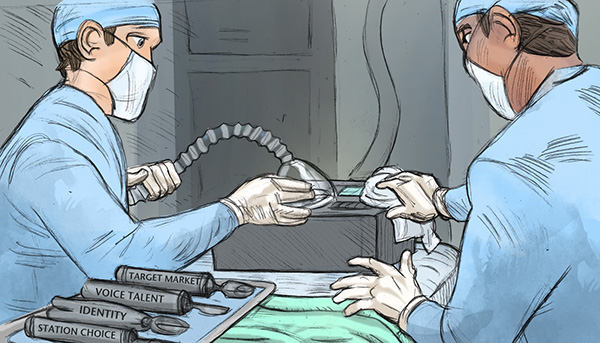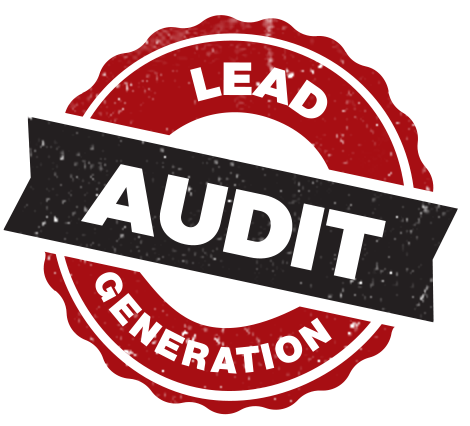The Nuts & Bolts Of What You Need To Know About Radio. All It Takes Is An Open Mind, Some Specific Know-How, And Patience.
Alrighty, it’s time to get down to business. HOW TO EXECUTE A RADIO CAMPAIGN.
Step 1: Make The Right Buy
Written by Rich Harshaw
I’m writing an entire article on this topic next week, focusing in on how to choose stations and how to negotiate with reps. But one quick comment as you contemplate implementing radio in your contractor-marketing efforts: start with just one station. I recommended in an earlier post that you immediately allocate 10% of your budget to FARMING, and in particular, broadcast media, and in particular, radio. For most companies, 10% is going to buy MAYBE one or two stations and no more.
Here’s a rule of thumb: one good, fat buy on one station is better than two skinny buys on two stations. Remember, you’re trying to have an ongoing conversation with your prospects—frequency and consistency are the key. And you have to commit for the long haul. You can’t jump in and out of radio—it won’t work. You have to let your prospects hear your message, get comfortable with you as a solution… then wait for them to have the problem you solve. Don’t expect that everyone’s going to suddenly want to replace their windows just because you’re now advertising. IT TAKES TIME!!!
Step 2: Deal With The Lead Tracking Problem
Radio introduces a high level of un-trackability—and therefore uncertainty—into any contractor’s marketing mix. It’s imperative that you use an easy-to-remember toll-free number (local is okay, too, as long as it’s easy-to-remember) for branding purposes… but that means you lose your ability to track call volume differences between stations. But more importantly, a huge percentage of your radio home-improvement lead traffic isn’t going to come through the phone anyway. Here’s why:
- Internet Effect: Lots of people who hear you on the radio don’t call the number you give on the phone; instead, they Google you and find your phone number online. This makes tracking nearly impossible.
- Past Customers: Part of the reason to engage in broadcast media is to reach your existing customers to give them post-purchase reassurance, and to make sure they use you again next time. The larger your company, the more important this becomes.
The solutions to the tracking problems, unfortunately, are not neat and clean. But there are solutions. On top of measuring the calls to the toll-free numbers, you should implement a “primary” and “secondary” lead tracking protocol. When a customer calls to request service, ask “where did you get our phone number?” (primary lead source), and “where else have you seen us before?” (secondary lead source). The information gathered is not 100% reliable because the customer may not know, might inadvertently give the wrong info, or might have multiple “secondary” sources but is only asked to list one.
Since many of the calls that come in from radio that are untrackable come through the Internet, the other way to track radio’s effectiveness is to track the volume of traffic (unique visitors) to your home improvement website and phone calls generated after implementing the campaigns vs. before the campaigns. Again, this is imprecise, but it will give you some idea.
At the end of the day, you have to have faith that IF your buy is good, your message is good, your target is good, and your frequency is good, you’re going to see an increase in your calls and sales. Tracking the top line sales is one way to keep a finger on the pulse. Whatever you do, don’t get so caught up and disturbed by the tracking limitations that you dismiss radio out of hand. That would be a huge mistake.
Step 3: Choose A Voice
I cannot overstate the importance of the voice you choose for your radio ads. One of the main reasons to be on the radio in the first place is that it allows you to convey EMOTION through the use of tone, pacing, pausing, timbre, and volume. Choosing the wrong voice can crush this important element before you ever start.
The problem is what I call ANNOUNCER VOICE. It’s very official. It’s very “radio-like.” And it sounds like garbage. There’s no authenticity at all—just a professional announcer.
That doesn’t mean you can’t hire a professional announcer to get the job done. It just means that you should be going for warm, friendly, authentic, and REAL.
Don’t let the station produce your ad with whatever random voice talent they can find. You want to make sure it sounds exactly right.
Use the same voice for all of your ads… you want your listeners to start to recognize the voice… like an old friend. I don’t recommend using station DJs. I don’t recommend using the owner of the company UNLESS he or she can read the ad and still sound authentic. I’ve seen dozens of business owners freeze when a microphone was shoved in their face. Not good.
You want your voice to be distinctive without being obnoxious, weird, or cartoonish. You want the tone of the voice to match your identity, and mirror the way you feel about your business. Don’t take this lightly—spend some time to GET IT RIGHT.
Professional voice talent and production will cost you anywhere from $150 to $300 per spot. That’s dirt cheap, my friends. And it can usually be turned around within 1 to 2 days. That’s fast, my friends. Go radio!
Step 4: Create The Message
This is where the rubber meets the road. The wrong message will sabotage all the hard work you’ve done to get to this point! To make sure your message works, follow these guidelines:
- A 60-second ad is best, followed by 30-second ads. Simple reason: the more time you have, the more you can say great stuff that makes people like you more.
- A 60-second commercial should clock in around 160 to 180 words. When you first write a spot, don’t worry about word count; instead, worry about the content. You will be able to come back later and chop stuff out to fit the right length.
- Use comparisons, metaphors, stories, and anecdotes to capture people’s attention. Some well-intended but misinformed “gurus” will tell you that it’s critical to come out of the gate SELLING. Telling people who you are and why you’re better and why they should choose you. Obviously, that’s important. But you don’t want hit them over the head with an unpleasant (yet totally expected) sledgehammer. Instead, get them involved in your commercial with some stories, situations, and metaphors.
- Stick to one concept per ad. This isn’t direct mail; and it’s not an infomercial. You don’t have to give the entire sales pitch in one ad. You have one minute (or less); you need to make sure that the listener comes away with a single concept. If you make your buy right, you’ll have plenty of time to tell them all about how wonderful you are in other ads over the course of the next 17 years. For now, one concept per ad. That’s it.
- Make sure your IDENTITY shines through loud and clear. Yes, you only want one concept (per above), just make sure that one concept supports your identity—what you’re all about, what people can expect when doing business with you, what makes you different and better. Don’t deviate!
- Cut 3 to 6 ads at once and rotate them. This will keep listeners from tuning out your spot because they’ve heard it 640 times in the last few weeks. It also allows you to integrate multiple selling points (remember, one concept per ad!) and build a more balanced case over the course of the campaign. Keep it interesting!
- Swap out your spots every 30 to 60 days. You want to keep the content fresh, and you want to hit different selling points (remember, one concept per ad!). For the first 12 to 18 months of your campaign, you should cut 3 to 6 BRAND NEW ADS every month or two. After that, you always want at least HALF of your ads to be new, but it’s okay to start to recycle some older ones. Remember, keep it fresh.
If you remember that you’re in it for the long haul… and you’re judging results based on YEARS, not days or weeks, it will be easier to demonstrate the patience required to build your case over a period of time with the listeners. Don’t get impatient; remember, I only asked you to commit 10% of your budget (to start) to this endeavor. If you do it right—from the buy, to the tracking , to the voice, to the messaging, RADIO WILL WORK FOR YOU. It’s impossible for it NOT to work.
Note: April is Radio month, a series of 12 articles all focused on everything you could ever want to know about making money by advertising on the radio.
March 31 – I Want To Punch Christine Cook In The Face
April 2 – Why You Should Immediately Allocate 10% Of Your Budget To Radio
April 4 – How Radio Stacks Up Against Other Media – The Pros & Cons
April 8 – The Nuts & Bolts Of Making Radio Work For You
April 11 – 5 Ways To Totally Screw Up Radio & FAIL
April 15 – How To Choose The Right Stations & Out-Negotiate The Sales Reps
April 17 – Client Success – Small Town Remodelers Experience Big Success On Radio
April 22 – Reader Mail: Should I Use Radio DJs For The Voice Of My Commercials?
April 24 – 2 1/2 Years on Radio… And Still Going Strong
April 28 – How To Write Great Radio Ads… & A Bunch Of Examples
April 30 – The Radio Ad That Made Listeners’ Ears Bleed
May 2 – Take The Plunge – Let Us Help YOU Get On The Radio
© 2014 – 2016, Rich Harshaw. All rights reserved.








